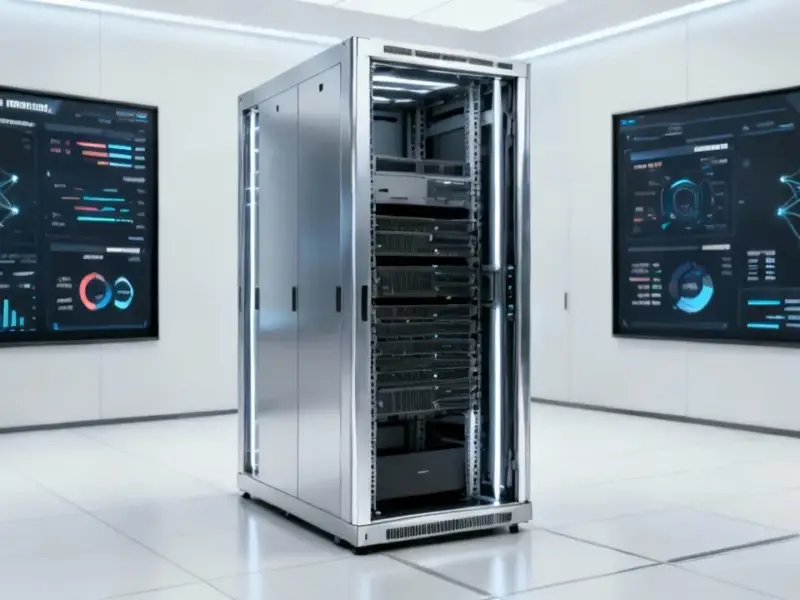According to CNBC, Jim Cramer rejected concerns about market concentration in the Magnificent Seven, arguing these stocks are tied together by their high growth rates rather than their products. Cramer emphasized that growth is what matters to investors, not specific technologies like data centers, accelerated computing, or even artificial intelligence. He highlighted Amazon’s recent performance, noting the stock soared 10% last week following strong quarterly results and added another 4% on Monday after announcing a $38 billion deal with OpenAI. Nvidia recently became the first company to hit a $5 trillion valuation, while the tech-heavy Nasdaq Composite continued its upward trajectory. This focus on growth fundamentals reveals deeper market dynamics worth examining.
The Growth Economy Business Model
What Cramer’s analysis touches on but doesn’t fully articulate is how these companies have engineered business models that create self-reinforcing growth cycles. Amazon’s AWS division exemplifies this perfectly – their cloud infrastructure becomes more valuable as more companies use it, creating network effects that drive exponential revenue growth. Similarly, Microsoft’s enterprise software ecosystem locks in customers through integration dependencies, while Nvidia’s AI chips become industry standards that entire technology stacks are built upon. These aren’t traditional businesses with linear growth curves; they’re platforms that become more entrenched and valuable with scale, creating near-insurmountable moats that justify their premium valuations despite massive market caps.
Strategic Positioning Beyond AI Hype
While artificial intelligence dominates headlines, the real strategic genius of the Magnificent Seven lies in their diversified revenue streams that can fund massive R&D investments. Amazon’s recent OpenAI partnership represents just one facet of their broader strategy – they’re using cash flows from e-commerce, advertising, and AWS to position themselves across multiple high-growth vectors simultaneously. This diversified approach to growth investing allows them to absorb failures in some initiatives while doubling down on winners, something smaller competitors simply cannot afford. The market isn’t rewarding them for being AI companies; it’s rewarding their ability to systematically identify and dominate the next high-margin business opportunities before competitors even recognize the patterns.
The Valuation Paradox Explained
Traditional valuation metrics struggle with these companies because they’re operating in what I call “compounding business environments.” When a company like Nvidia achieves 200%+ revenue growth in AI chips while maintaining 70%+ gross margins, standard P/E ratios become almost meaningless. The market is pricing in not just current growth but the probability of sustained dominance in markets that are themselves expanding rapidly. This creates a self-fulfilling prophecy where their market cap advantage allows them to acquire talent, make strategic acquisitions, and outspend competitors on infrastructure – all of which reinforces their growth trajectory. The risk isn’t overvaluation; it’s the potential disruption of this growth compounding mechanism.
Follow the Money: Who Really Benefits
The financial beneficiaries extend far beyond the companies themselves. Institutional investors, particularly index funds and ETFs, have become structurally dependent on Magnificent Seven performance for their returns. This creates a feedback loop where any dip in these stocks triggers massive buying from passive strategies, effectively putting a floor under their valuations. The companies also benefit from cheaper capital access, allowing them to finance ambitious projects that would be prohibitively expensive for smaller competitors. Meanwhile, the ecosystem around these giants – from suppliers to service providers to startups building on their platforms – participates in the growth economy they’ve created, though with substantially more risk and less upside.
The Sustainability Question
The critical business strategy question isn’t whether these companies will continue growing – it’s what happens when their growth rates inevitably normalize. Companies facing this transition typically have two paths: they can become cash cows distributing dividends (like Microsoft did in the 2000s) or they can continually reinvent themselves to find new growth vectors (like Amazon moving from books to cloud computing). The current valuation premiums suggest investors believe in the latter scenario, betting that these companies’ innovation engines and financial resources will allow them to repeatedly identify and dominate the next major technology shifts. Whether this faith is justified will determine not just their individual fates but the broader market’s direction for the next decade.




